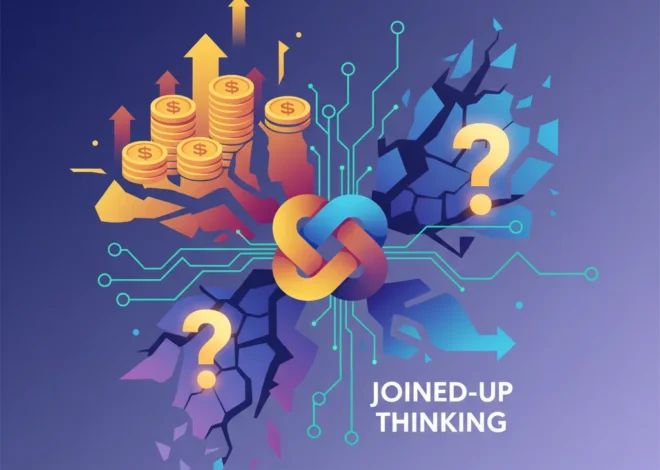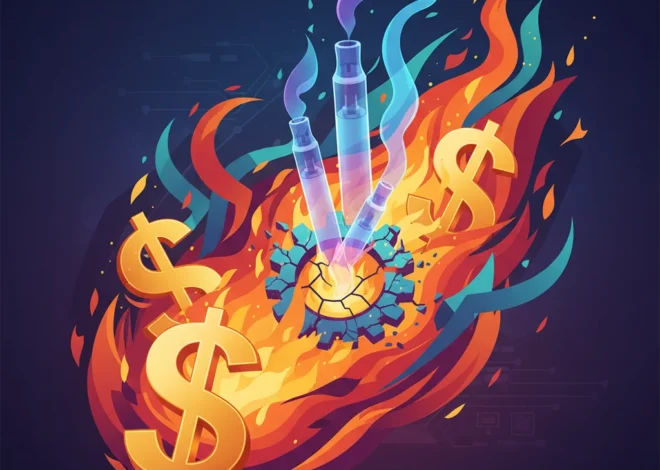
A Global Tremor: Why Renewed Fears in US Banking are Shaking World Markets
The global financial markets are a tightly woven fabric. A pull on one thread in New York can send ripples through London, Frankfurt, and beyond. We saw this intricate dance play out vividly as a fresh wave of anxiety surrounding the stability of the U.S. banking sector sent global stock markets tumbling. The UK’s benchmark FTSE 100 index slid by 1.5%, a significant drop mirrored by similar declines in Germany’s DAX and France’s CAC 40. This synchronized downturn wasn’t a random fluctuation; it was a direct reaction to distress signals flaring from across the Atlantic.
For investors, business leaders, and anyone with a stake in the global economy, these are more than just numbers on a screen. They are indicators of sentiment, risk, and the underlying health of the financial system that underpins our daily lives. The key question on everyone’s mind is: Are these tremors a fleeting aftershock from last year’s regional banking crisis, or are they the foreshock of a more significant seismic event? In this deep dive, we will dissect the root causes of this market anxiety, explore the historical context, and analyze the far-reaching implications for investing, finance, and the future of banking.
The Immediate Fallout: A Sea of Red Across Global Indices
When confidence in a cornerstone of the global economy—the U.S. banking system—begins to crack, the reaction is swift and unforgiving. The recent sell-off was a textbook example of this interconnectedness. Fear is contagious, and it travels at the speed of modern trading algorithms. While the epicenter was in the United States, the shockwaves were felt immediately in European trading sessions.
To put the market reaction into perspective, let’s look at the performance of several key global indices during the height of the recent jitters.
| Index | Country | Approximate Decline | Key Sector Impact |
|---|---|---|---|
| FTSE 100 | United Kingdom | ~1.5% | Banking and financial services stocks led the decline. |
| DAX | Germany | ~1.3% | Major banks like Deutsche Bank saw significant drops. |
| CAC 40 | France | ~1.4% | Financials such as BNP Paribas and Société Générale were hit. |
| S&P 500 | United States | ~1.6% | The KBW Nasdaq Bank Index saw a much steeper fall, highlighting the sector-specific nature of the panic. |
This data illustrates a clear, coordinated flight from risk, specifically from financial stocks. Investors weren’t just selling off assets indiscriminately; they were targeting the very sector that was flashing warning signs. This precision suggests a market that has learned painful lessons from the past and is now hyper-sensitive to any hint of instability in the banking world.
Beyond the Ticker: A Deep Dive into Tesco, CVS, and Wetherspoon's Investment Potential
Deconstructing the “Nerves”: What’s Really Spooking the Market?
To understand the sell-off, we must look beyond the headlines and diagnose the underlying conditions causing the “nerves.” The current anxiety is not born from a single event but is a confluence of lingering issues that have been simmering since the rapid interest rate hikes began.
1. The Unhealed Wound of Interest Rate Risk
At the heart of the problem is the Federal Reserve’s aggressive campaign to tame inflation by raising interest rates. While necessary for the broader economy, this created a mathematical trap for many banks. Banks hold vast portfolios of government bonds and mortgage-backed securities, which they purchased when interest rates were near zero. As new bonds are issued at much higher rates, the market value of those older, lower-yielding bonds plummets. This creates massive “unrealized losses” on their balance sheets. While these are only paper losses, they become very real if a bank is forced to sell these assets to cover depositor withdrawals, as was the case with Silicon Valley Bank in 2023. According to the FDIC, U.S. banks were sitting on over $500 billion in unrealized losses on securities at the end of last year, a stark reminder of this persistent vulnerability.
2. The Commercial Real Estate (CRE) Ticking Time Bomb
The shift to remote and hybrid work has decimated the office real estate market, leaving many buildings with high vacancy rates and plunging values. This is a critical problem for the regional banks that financed these properties. Many of these banks have a disproportionately high concentration of their loan books tied to CRE. As these loans come up for refinancing in a high-interest-rate environment, property owners may be unable to make their payments, leading to a potential wave of defaults. The recent turmoil surrounding institutions like New York Community Bancorp, which reported significant losses tied to its CRE portfolio, served as a potent catalyst, reminding the market that this risk is not theoretical—it’s actively crystallizing on bank balance sheets.
Fintech and the New Face of Financial Risk
The conversation around banking stability is incomplete without acknowledging the profound impact of financial technology (fintech). In many ways, fintech is a double-edged sword in this context. On one hand, the proliferation of mobile banking apps and instantaneous digital transfers has empowered consumers but has also accelerated the speed of bank runs. During the 2023 crisis, depositors pulled billions of dollars from troubled banks with a few taps on their smartphones, a phenomenon unheard of in previous eras. This digital velocity adds a new layer of volatility to the stock market and the banking system.
On the other hand, advances in fintech and even concepts from the world of blockchain offer potential solutions. Enhanced data analytics and AI can help banks and regulators model and manage risk with far greater precision. The transparency and real-time settlement capabilities inherent in blockchain technology, while still nascent in mainstream finance, offer a glimpse into a future where risks could be identified and mitigated much faster. The challenge for the industry is to harness the innovative power of financial technology to build a more resilient system, rather than one that simply moves faster towards the cliff edge.
The Cash Flow Mirage: Deconstructing the Billion-Dollar Hole in First Brands Group's Finances
Actionable Insights for a Volatile World
Navigating this environment of uncertainty requires a clear-headed approach tailored to your specific role in the economy.
For Investors:
The knee-jerk reaction is to sell, but seasoned investors know that volatility can also present opportunity. This is a time to review, not revolt.
- Diversify: Ensure your portfolio is not overly concentrated in a single sector, especially financials.
- Focus on Quality: Look for companies with strong balance sheets, low debt, and resilient earnings that can weather an economic downturn.
- Avoid Panic: Emotional decisions are rarely profitable. Base your investing and trading strategies on fundamental analysis, not on fear-driven headlines. The CBOE Volatility Index (VIX), often called the “fear index,” has seen spikes during these periods, but as historical data shows, these spikes are often followed by periods of normalization.
For Business Leaders:
Banking turmoil directly impacts the availability of credit, which is the lifeblood of commerce.
- Secure Credit Lines: If you anticipate needing capital, it may be prudent to secure lines of credit now before lending standards tighten further.
- Stress-Test Your Finances: Run scenarios to understand how your business would perform in a recessionary environment or if your customers face financial strain.
- Communicate with Stakeholders: Be transparent with your investors, employees, and partners about how you are navigating the uncertain economic landscape.
The Road Ahead: Reading the Economic Tea Leaves
The future trajectory of the markets and the global economy hinges on several key factors. All eyes are on the central banks, particularly the U.S. Federal Reserve. Will persistent inflation force them to keep rates “higher for longer,” continuing to squeeze the banking sector? Or will signs of economic weakness and financial instability prompt a pivot towards rate cuts? This delicate balancing act is the central drama of modern economics.
Regulators are also under immense pressure. There will be renewed calls for stricter oversight of regional banks, potentially closing loopholes that allowed institutions to grow to a systemically important size without the corresponding level of scrutiny. The ongoing debate about capital requirements, liquidity rules, and the role of deposit insurance will shape the future of the banking industry.
The Ultimate ESG Test: When Nature Has a Seat at the Trading Desk
Ultimately, the recent market shudders are a powerful reminder of the fragility and interconnectedness of our global financial system. The “nerves” are a rational response to genuine risks that have been building under the surface. While the immediate panic may subside, the underlying issues—interest rate exposure and a troubled commercial real estate market—will not disappear overnight. For the foreseeable future, vigilance, strategic planning, and a deep understanding of the forces shaping our economy will be the most valuable assets for anyone looking to navigate the challenging but opportunity-rich landscape of global finance.


